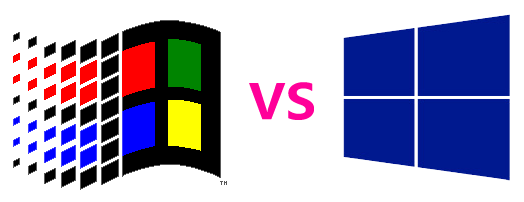Will enterprises buy into the new Windows vision?

Say you are the CTO of a business, and you buy 500 Surface Pros. (For this exercise, this can be any Windows 8 tablet you like.) If you're buying that many, you're going to have volume licensing and you're also likely to have Office 2013 as part of that.
You give your users those laptops, resplendent in their Office-y goodness. What part of "new Windows" do they use?
Which Metro-style, aka Modern UI, aka Windows Store apps do they turn to, day to day?
They've got Outlook, so they're not going to use the (curiously rubbish) built-in mail apps. If they're not using the mail apps, the live tiles won't work, as they don't expose data from Outlook, so the Start screen looks a little limp.
There are zero examples of business apps where the Windows Store app counterpart is better than the old Windows desktop counterpart. So, assuming your user base does not contain a majority of masochists married into the new Windows vision for the sheer joy of it, they're all going to spend their time in the old Windows world.
Some of the problems here come from the fact that what people use the iPad for in business is very limited. The iPad is great for stuff you do outside of work time and space, but in work, they're used for email, managing a calendar, web browsing, document viewing, and not much else. More exotic uses involve connecting to remote systems. Some businesses have private line-of-business (LOB) apps that they roll out to the iPad users.
Once you've got that core set — regardless of platform — you're more or less complete. And because Windows is so mature in the business setting, the old Windows vision hits all the targets.
Development
Circuitously, what got me onto this piece was that I was giving a webcast about technologies for delivering private apps in business, and it occurred to me that if you're targeting Windows tablets, the easiest thing for an enterprise to do is just keep doing as they have been doing, and keep targeting Windows Forms, WPF, Java, Win32, MFC, etc — ie, whatever platform they're used to building in.
A normal Windows 8 tablet doesn't present a weird surface area for developers or operations teams. What I mean by "weird" here is "unfamiliar". The existing development team and/or partners almost certainly have little experience at building Windows Store apps compared to platforms they already deliver on.
The only adjustment that's needed is that some teams will need to swing back from pure web-based delivery, as has been the fashion, and also get some of their UI/UX skills sharpened so that what they're deploying is touch friendly.
This arrangement is part of the beauty of Microsoft — even Windows 3.1 software still works. It's a huge part of why businesses love Microsoft.
And this is important in the enterprise space, because rewards derive from rationality of the business case. No one wants to be fired because they took a team of 10 perfectly good WPF developers and killed a year's budget by trying to re-create a perfectly good WPF app as a Windows Store app. All they have to do is install it directly on any x86-based Windows 8 tablet as a WPF app.
And, you know what, if you don't like Windows 8, that's fine, too. Just buy the new Windows 8 kit and downgrade to Windows 7. That way, nothing has changed, and nothing is weird.
That same argument works for iOS as well, by the way. You can de-risk the work involved with building native LOB iPad apps by not building native iPad apps and building old Windows ones.
And enterprises can likely, at this point, write off Windows RT. In the enterprise space, it looks unlikely that anything other than x86 and full-fat Windows will be used in any sort of estimable timeframe.
Conclusion
Read this
My view is that when enterprises take Windows 8 under their wing and start thinking about delivering private LOB apps on tablets, they're more likely to skew toward technology paths that are known. Knowledge in this case encompasses both experience in the enterprise that you can point at, and experience out in the market that you can access.
Or, simply, building private LOB apps as Windows Store apps and buying into the new Windows vision in the enterprise at this point in time seems both risky and pointless.
But what does that do for Microsoft's plan of becoming a consumer devices business? The old Windows way of doing things is not good enough to go toe to toe with iOS and Android — we know that re-imagining Windows was a good thing from that perspective.
Does it matter that enterprises are likely to stay with old Windows for many, many years?
I suspect not. As the total space for compute devices expands into the consumer market, the enterprise is going to be more niche. Whether new Windows takes off depends on the value of the overall proposition to them, and that means good apps, a good content ecosystem, a good brand, keen prices, and great marketing.
Whether a CTO would rather push their users to a new Windows world or keep them comfy in the old Windows world likely doesn't matter.
But it does suggest an interesting two-tier world of Windows, much like today in business, and a different Windows in consumer land.
What do you think? Post a comment or talk to me on Twitter: @mbrit.
